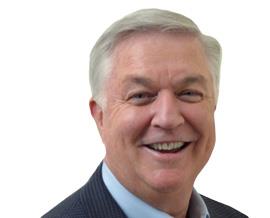07 October 2024

Mark Lunsford, Chief Revenue Officer, Peraso Inc
Access to the internet has become one of the great equalizers in the modern world. Anyone with a device and an internet connection can access vast resources to learn new skills, solve problems and connect with others. However, not all access is equal, and the digital divide persists. Congested networks, weak signals and high costs limit access, especially in underserved or poorly connected areas.
Typically, there are two ways to get access to the internet; cellular data and via a broadband service provider. Cellular providers principal objective is to serve the mobile device needs of a person on the go, while a broadband service provider or internet service provider (ISP) serves fixed location access like a home or business.
Cellular data vs. fixed broadband
Cellular data, while broadly available, is expensive and without the latest phone and proximity to a tower can be lacking in performance. If the population in a particular area is dense and there are many phones accessing the same tower, the performance will be degraded. Cellular networks also have the burden of paying for the license to use the frequencies dedicated to cell phone service. Add this all up and cellular networks can be expensive, slow and unreliable.
Alternatively, an ISP will provide a fixed service that is reliable and usually has higher bandwidth than what is possible from a cell phone network. ISPs typically use co-axial cable, fibre, or radio connections to bring internet service to the home or business. These connections then provide Wi-Fi or ethernet connectivity to the subscriber. The ISP is targeting the fixed broadband users and is not dependent on cellular spectrum. The challenge for ISP’s is physically getting the service to the subscriber.
One significant challenge for cable and fibre providers is that they must pull physical hardware in the form of co-axial cable or optical fibre to the location either by trenching underground or hanging the media from service poles. This is a slow and expensive process and is susceptible to licensing, access limitations, and physical damage. Install times are long and disruptive to existing infrastructure. Once installed, cable or fibre provides good service but must now recover the high expense of installation and they must deal with the possibility of vandalism.
Wireless radio: a faster, cost-effective alternative
Wireless radio connections have the benefit of installation speed, low cost and are less prone to vandalism because the signals fly overhead in the atmosphere. Early on in broadband deployment, it was believed that fibre and cable had a speed and latency advantage, but with today’s technology, there are wireless solutions that can deliver competitive bit rates with latencies often better than cable or fibre. Within the wireless realm there are generally three main options for deployment, including existing cellular networks, open unlicensed frequencies commonly used by Wi-Fi signals and mmWave signals in the unlicensed spectrum of 60GHz.
The signals that share spectrum with either the cell phone networks, or the Wi-Fi networks, can perform well in ideal circumstances but they are subject to crowding which can congest the signal and ultimately reduce performance. Congestion is particularly problematic in dense urban environments where an abundance of cell phones and Wi-Fi networks in close proximity requires the networks to share the available spectrum with a large number of networks and clients resulting in limited throughput. The congestion affects the performance at the device level and at the same time the backhaul signals are also overwhelmed. In the limit, between the competition for available spectrum and the overhead needed to manage all the traffic, performance can be reduced to a crawl. To make matters even worse, the available bandwidth at these frequencies does not support the data rates needed in the best of circumstances. When you combine a low performing solution in a congested environment, you end up with unsatisfactory service to the end user.
“Imagine a world where internet costs are low enough to serve nearly everyone, with bandwidth that allows unlimited access to online resources.”
The power of 60GHz mmWave technology
The solution to this problem is to move the primary data links to an unused frequency that isn’t competing with every cell phone and Wi-Fi network in the area. 60GHz mmWave to the rescue.
mmWave implies a short wavelength or high frequency radio signal. The 60GHz band, which is generally available depending on regional regulations, is defined as 57GHz to 71GHz with 6 channels available. Each channel has bandwidth allowing multi-gigabit capacity, meaning you can have networks right next to each other without interference. Once the signal has been delivered to the client, an ethernet output can be connected to a gateway and subsequent ethernet networks or a Wi-Fi hotspot for local wireless distribution of the bandwidth. Now, with a 60GHz radio, an uncongested signal can provide gigabit level performance to the middle of a dense population at a cost that is a fraction of pulling cable or fibre and with bandwidth far exceeding any other RF solution.
Last mile connectivity
Imagine a world where internet costs are low enough to serve nearly everyone, with bandwidth that allows unlimited access to online resources. We can open the world of high-performance data to populations previously overlooked and unable to compete on a level playing field. 60GHz technology can deliver life-changing opportunities to those who need it most.
Consider 60GHz radios as a key part of your last-mile connectivity solutions.







